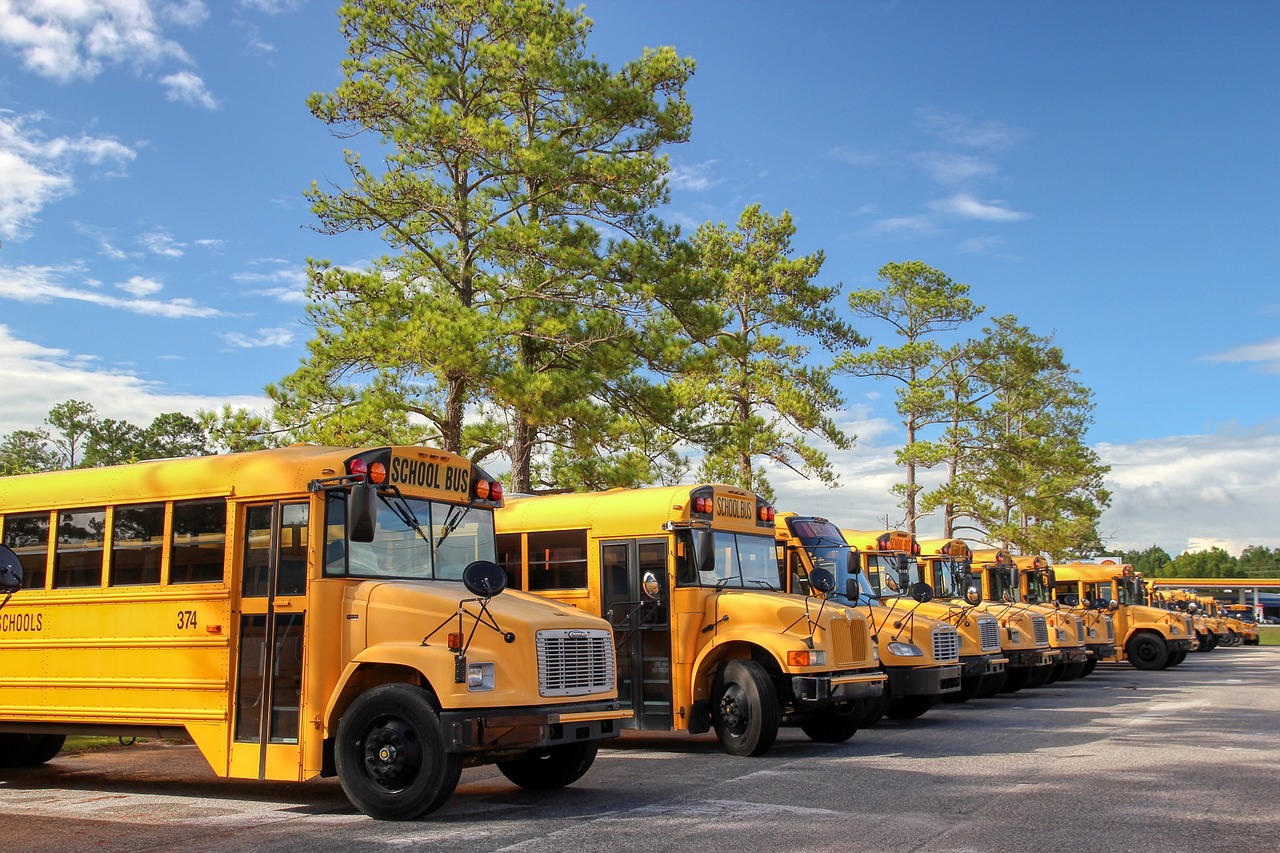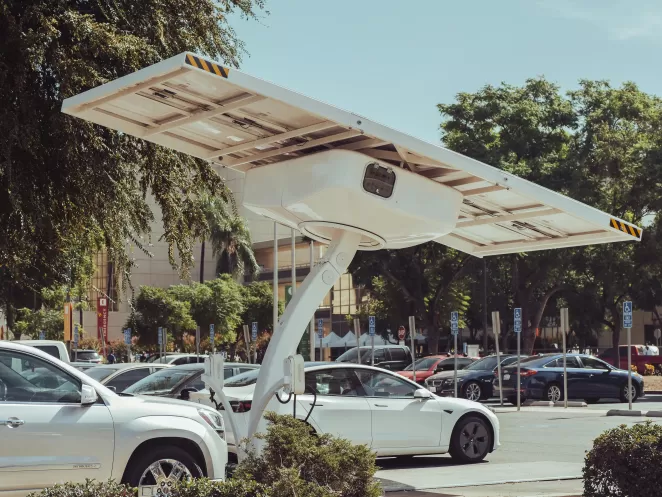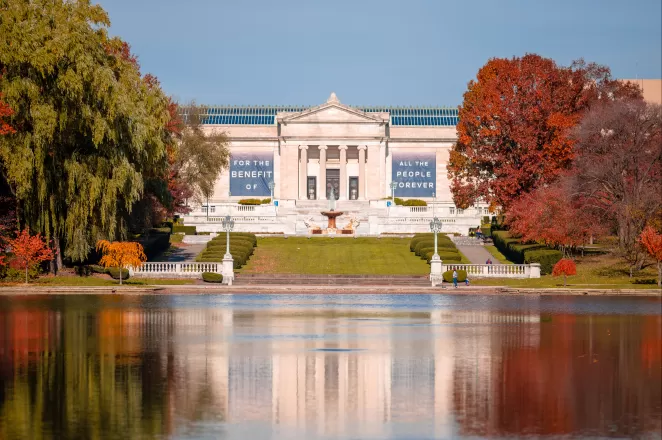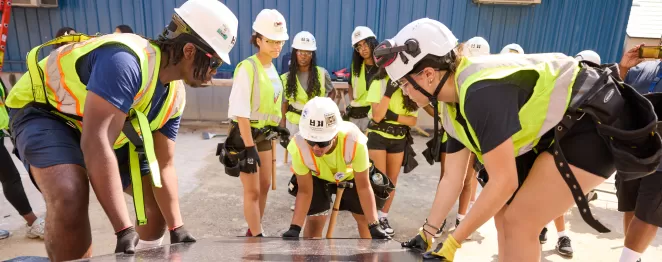Students are Boarding Cleaner Rides Back to School
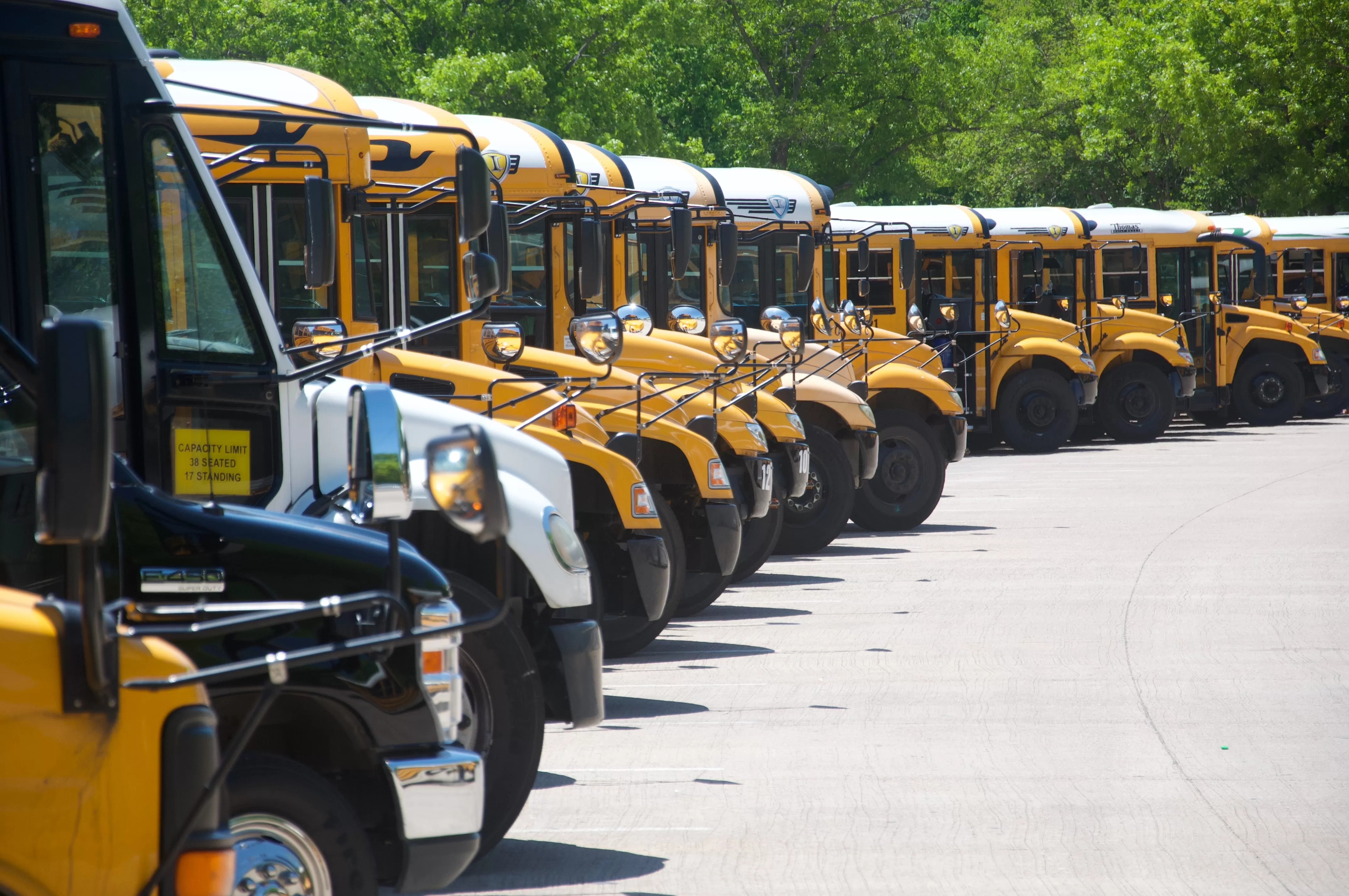
For tens of millions of children across the United States, the smell of diesel exhaust is the way their school days start. That exhaust is incredibly toxic, which is one reason the Baltimore Public School System in Maryland and many other school districts around the country are transitioning their school bus fleets to electric vehicles.
“There are 486,000 school buses in the United States,” says Ani Dasgupta, CEO and president of the World Resources Institute, a global non-profit that works on sustainability including its Electric School Bus Initiative. “Twenty million kids actually use it. And those kids who use diesel buses inhale poisonous gas every time they're in a bus, and much more than you and I outside the school buses.”
The link between diesel fumes from school buses and increased rates of lung disease is well established – and it exacerbates the pollution burden on vulnerable communities. This is because Black students, students with disabilities, in rural communities, and those from low-income families are more likely to have a long bus ride to school and consequently, a greater exposure to harmful pollutants. According to the Environmental Protection Agency, exposure to diesel fumes can cause asthma and other respiratory conditions, especially in children. Asthma is a major problem in Baltimore, with 20 percent of children having the disease. Being constantly exposed to diesel fumes from the buses is likely a contributing factor.
“When you can't breathe, it makes for a bad situation with the kids in this area,” says Lafayette Sanders-Dorsey, a lead bus mechanic for Baltimore Public Schools. “I had a kid have an asthma attack, and there was nothing you could do but call an ambulance. Now that we have electric buses, it proves to me that a change is coming.”
That switch will pay off in the classroom too. Research shows that reducing students’ exposure to air pollution from diesel school buses can increase student attendance and test scores.
“What you need to know about electric school buses is that they are healthier, they don't have these polluting emissions that our kids are breathing and it's better for their lungs and their brains,” says Bobby Monacella, a senior campaigner for Mothers Out Front, a national activist group advocating for safer school transportation and environmental justice. “To me, that is huge for my kids’ future.”
Cleaner buses, thanks to federal funding
While cleaner buses are a clear win for kids, transitioning entire fleets is no small feat for school systems. That’s where grants from the federal government have made a huge difference. The Biden Administration’s Bipartisan Infrastructure Law has fueled the transition with the creation of the EPA’s Clean School Bus Program (CSBP) which designates $5 billion to support school bus electrification. Then came the Administration’s signature Inflation Reduction Act which has $1 billion for a Clean Heavy Duty Vehicle Program and other tax credits. The federal investment represents a fundamental change in the way American children get to school.
“It's such an exciting time to be a part of the electric school bus movement,” Monacella says. “We have still more federal funding available, so it's just super exciting to see school districts taking advantage of that and switching their buses from dirty, polluting diesel to clean, healthy electric.”
A healthy and cost-saving move for schools
In addition to the health, equity, and educational benefits of cleaner buses, electric school buses are also the more affordable option for schools. With lower fuel costs and reduced maintenance costs, WRI has found that choosing a new electric school bus, rather than a diesel bus, can save a school system an average of $6,000 every year on operational expenditures.
Pamela Boozer-Strother serves on the School Board of Prince George’s County Public Schools, and she sees beyond those balance sheets to the greater costs.
“The school system is taking on a lot of the health and emotional health of children,” said Boozer-Strother. “Those costs beyond the bus. There are a large percentage of children with asthma in our communities. If we are reducing the amount of missed school days, if we are reducing the amount of visits to emergency rooms, those are the changes we're going to see in our communities.”
Students are leading the way
The transition to electric buses has given the people who drive and ride them a feeling of control over climate change. Emily Lee is a rising junior at Montgomery Blair High School and an intern at BIPOC Montgomery County Green New Deal. Though she wants to see the transition speed up even more, she welcomes the feeling of accomplishment from what has already been done.
“I've been involved in climate advocacy for about three years now, ever since 2021,” she says. “I got involved in it because I have a lot of anxiety surrounding climate change. I felt like I couldn't do anything.”
Through letter writing and other advocacy work, Lee and her peers helped push the adoption of electric buses along – and it worked. The Maryland congressional delegation has delivered critical grants and funds for her school district’s electric bus project.
“In Montgomery County, we try to be a catalyst for change, for advocating for electric school buses,” she says. “And so I believe that since we have really pushed for it here in Montgomery County, that it also spreads the news. We believe that by advocating for electric school buses here in Montgomery County, it persuades and encourages other students in other places around the U.S. to want the same.”

